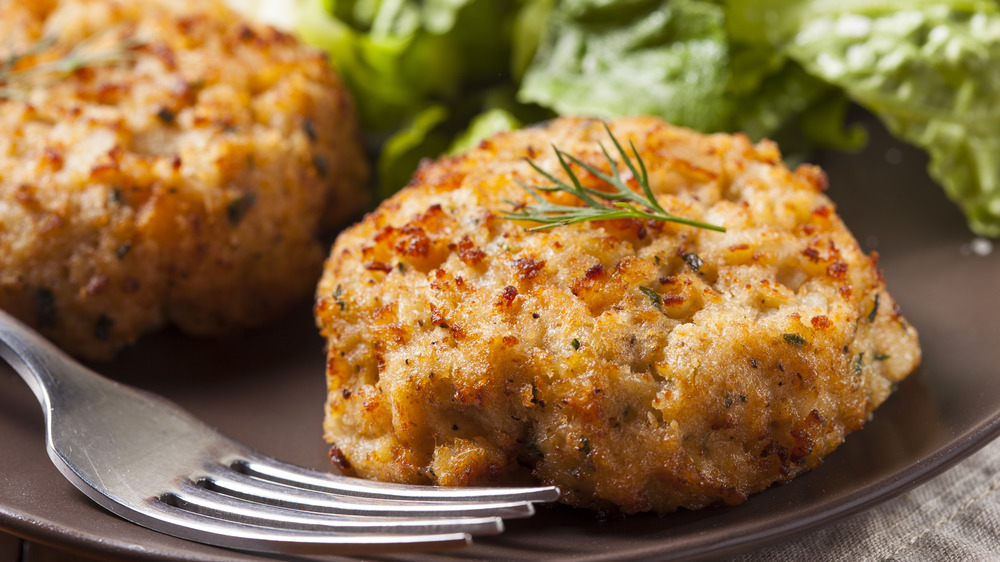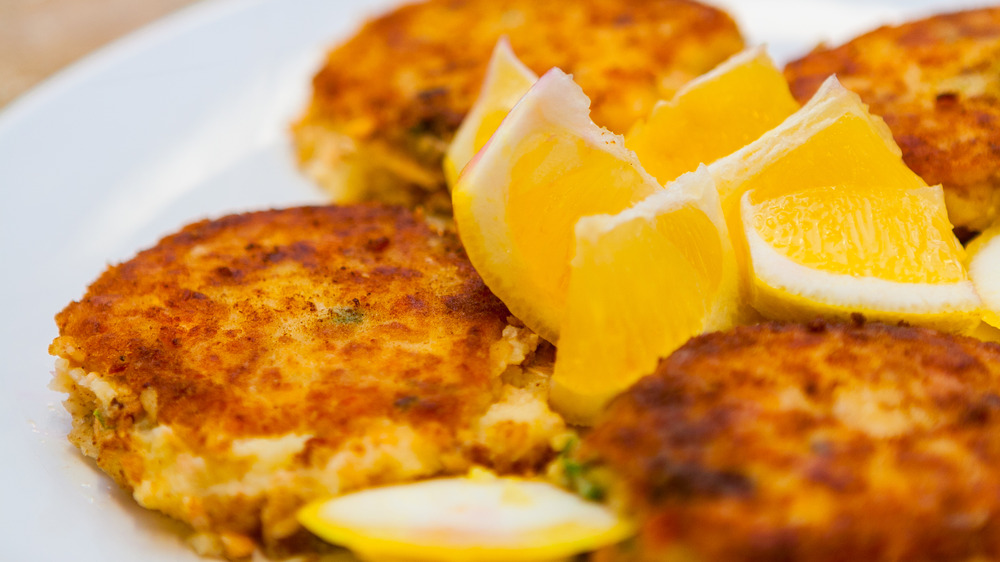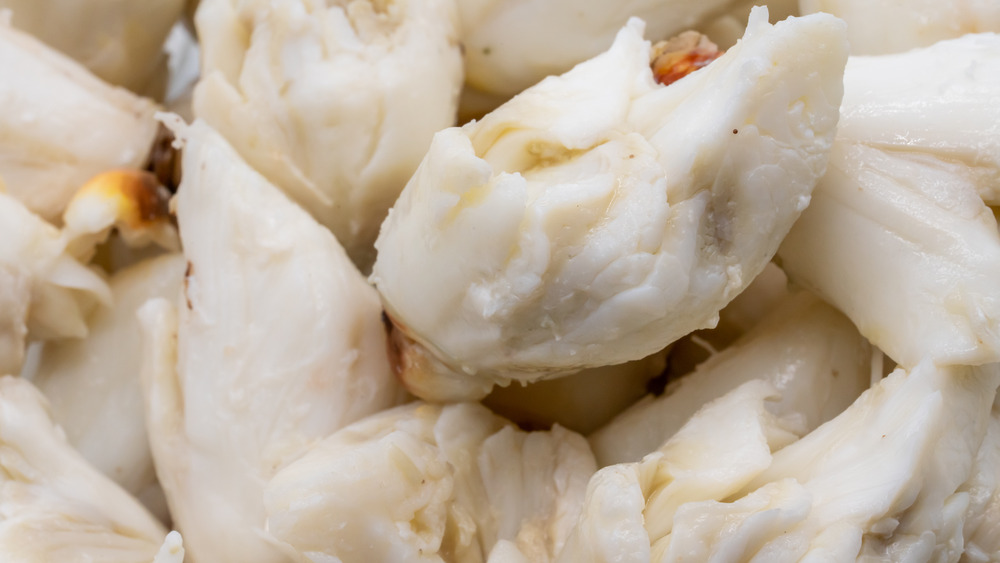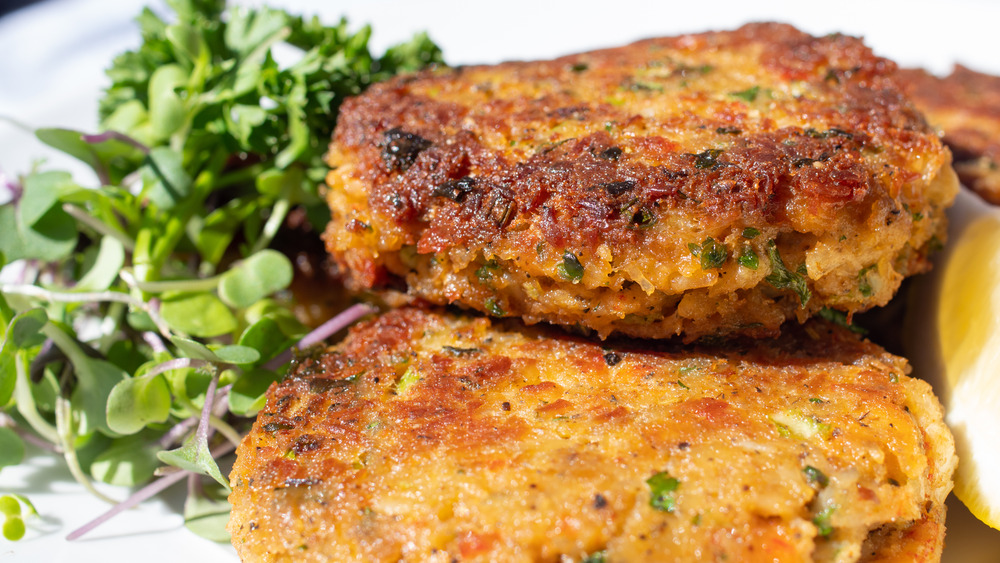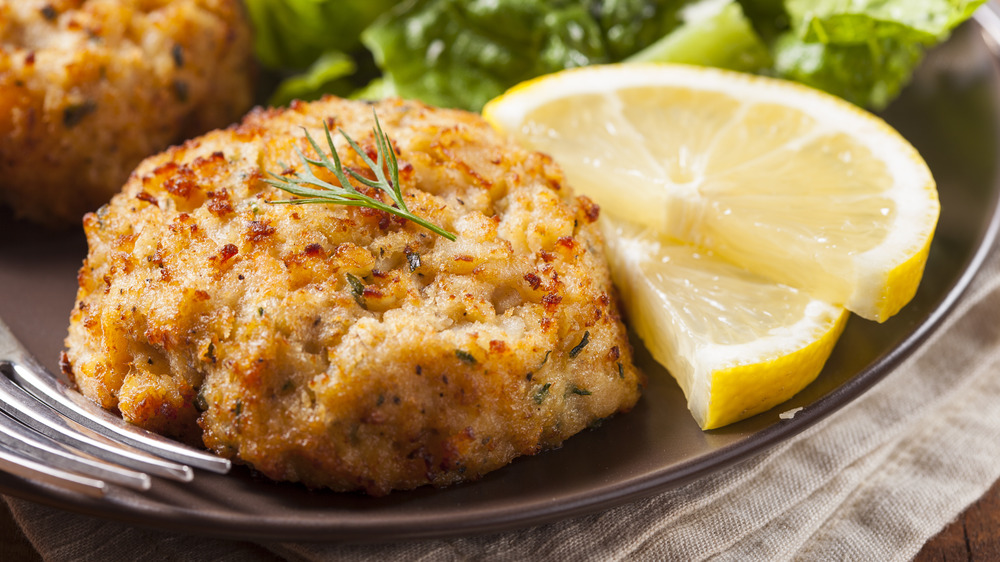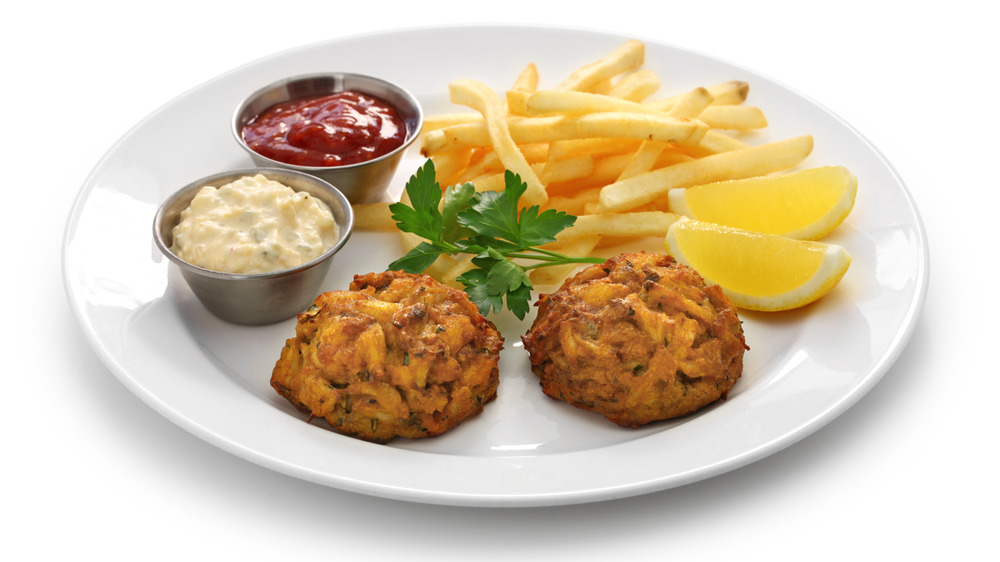What You Didn't Know About Crab Cakes
If you like seafood, chances are you've tried a crab cake or two in your day. And if you've ever visited Maryland, it's likely you've eaten at least 10 or 12. In that state, crab cakes are an obsession. Local publications like Baltimore Magazine frequently rank available options; lively Reddit threads are devoted to finding the best cakes around; even PBS documentarians have gotten in on the game, combing the Chesapeake region in "the ultimate crab cake treasure hunt." This area stakes its hometown pride on crab cakes because food folklore has it that the dish was created on the Chesapeake Bay. But like any good food origin story, like the surprising birth of the Caesar salad, the actual facts surrounding the genesis of crab cakes are shrouded in mystery and misconception. So let's take a look at the history of these delicious fritters, and see what we can unearth.
Where and when was the crab cake born?
Various sources, including Baltimore Magazine, claim that the first published reference to "crab cakes" appeared in 1939, when Crosby Gaige, president of the New York Wine & Food Society, listed a "Maryland Crab Cake" in his book "New York World's Fair Cookbook." But this isn't actually true, as the Maryland history blog Old Line Plate points out. It seems that the first published recipe for crab cakes appeared decades earlier, in the 1891 cookbook "Cookery With a Chafing Dish" by Thomas J. Murrey, a caterer whose resume included stints at the Astor House in New York and The Continental in Philadelphia.
Murrey's recipe instructs that "the meat from the hard shell crabs, after boiling, may be made into little cakes, held together with the yolk of an egg, seasoned with salt and pepper, then cooked in the chafing dish with a small amount of butter or oil."
Old Line Plate notes that a few years later, in 1894, a similar recipe for crab cakes "for breakfast" was published in "Mrs. Charles Gibson's Maryland and Virginia Cook Book." "Take the crab after it is picked and season it high with red pepper and salt," the recipe notes. "Then add butter, and make them in round cakes, using a little flour to hold them together. Then dip them in egg and cracker beaten fine. Fry in hot butter or lard."
The great lump crab meat debate
As crab cakes and other dishes like deviled crab became popular restaurant choices in the early 20th century, Maryland's crab fishing industry expanded to meet the needs of crustacean-crazed diners (via Southern Living). A 1905 book published by the U.S. Bureau of Fisheries, The Crab Industry of Maryland, notes that "Maryland furnishes by far a larger supply of crabs than any state in the Union, and it is not improbable that its people were the first to discover the edible qualities of this crustacean and its value as a market product."
As more and more crab boats plumbed the depths of the Chesapeake, crab meat and its various types began to be codified. Today, crab meat is generally classified into three categories: lump, backfin and claw: the bigger the "lump" of picked crab meat, the more desirable it is deemed to be, and its price reflects that (via The Spruce Eats). This crab meat hierarchy was brewing way back in the day: The Crab Meat Industry of Maryland remarks that "the meat is divided into three classes — flakes, ordinary, and fat meat, the flakes being considered much superior to the other because they are whiter and firmer."
Is lump crab meat really best for crab cakes?
Over time, lump crab meat, the large pieces of flesh that connect to the swimmer fins on either side of the crab, became an obsession among crab fans, prized for their "fine texture and sweet taste" (via The Spruce Eats). This type of crab can be obscenely expensive, going for upwards of $50 per pound, whereas backfin and claw meat, which break up into smaller, less intact pieces when picked, sell for a more reasonable $35-45 per pound (via Crab Place). With that luxury price tag, is lump or jumbo lump crab meat really necessary for delicious crab cakes?
Some food writers don't think so. In a 2011 story titled "Crab lovers: Can you get over the lump?" Baltimore Sun columnist Richard Gorelick argues the crab cake originated as most fritters do: as a way to use up leftover ingredients, not as a vehicle for specialty crab.
"The crab cake was once a humble second-day meal, composed of the gleanings of a crab feast — flavorful claw meat and, if you were lucky, unbroken pieces of backfin," Gorelick writes. "The restaurant crab cake of today, almost without exception, is made with jumbo lump, a packing category that didn't even exist generations ago."
Gorelick advocates for returning to a humbler type of crab cake recipe. The beauty of making your own crab cakes at home is that you can choose which type of crab meat meets your needs for flavor and value.
How to make crab cakes at home
As illustrated by the early crab cake recipes published in the late 1800s and early 1900s, making them at home doesn't have to be complicated: all you need is the crab meat of your choice; eggs; some type of binder, like bread or cracker crumbs; some seasoning; and some hot fat. Within those confines, you can feel free to experiment with additions such as sautéed veggies, as superstar Southern chef Emeril Lagasse favors in his cakes (via Emeril Lagasse's website). Or, add some heat in the form of sriracha, a secret ingredient in Oxford, Mississippi chef John Currence's crab cakes (via Sauce).
One thing chefs and home cooks alike seem to agree on is that when it comes to crab cakes, the less filler you use, the better. Serious Eats managing culinary director Daniel Gritzer writes that one of the biggest mistakes people make with crab cakes is adding "an excessive amount of breading and filler to stretch the pricey crabmeat." Adding too much bread or cracker crumbs to your probably-expensive crab meat can dilute the sweet crustacean flavor — ideally, Gritzer writes, use "just enough breading to give you a workable mixture that will hold together, but not so much that the cakes taste bready."
Where to find the best crab cakes in Maryland
If you want to immerse yourself in a consuming project with no end in sight, take a walk down the digital lanes of the internet and try to find the best restaurant crab cakes in Maryland. The dish is hotly contested among locals, who take to Reddit or participate in the surveys of local publications like Patch to defend (or take down) state favorites such as Pappas in Baltimore and Box Hill Pizzeria in Abingdon.
In addition to these oft-mentioned spots, locals and tourists alike frequently cite The Corner Stable, Costas Inn, The Crackpot, Faidley's Seafood and Jennings Cafe as spots that can be relied upon to serve a hot, tasty, and unimpeachable crab cake (via Baltimore Sun).
Not planning on being in Maryland anytime soon? Never fear: many of the aforementioned restaurants offer domestic shipping of frozen crab cakes. In addition to these spots, you can mail order crab cakes from G&M Restaurant, The Crab Place, and Cameron's Seafood for a no-stress Maryland-style feast right in your own home.
